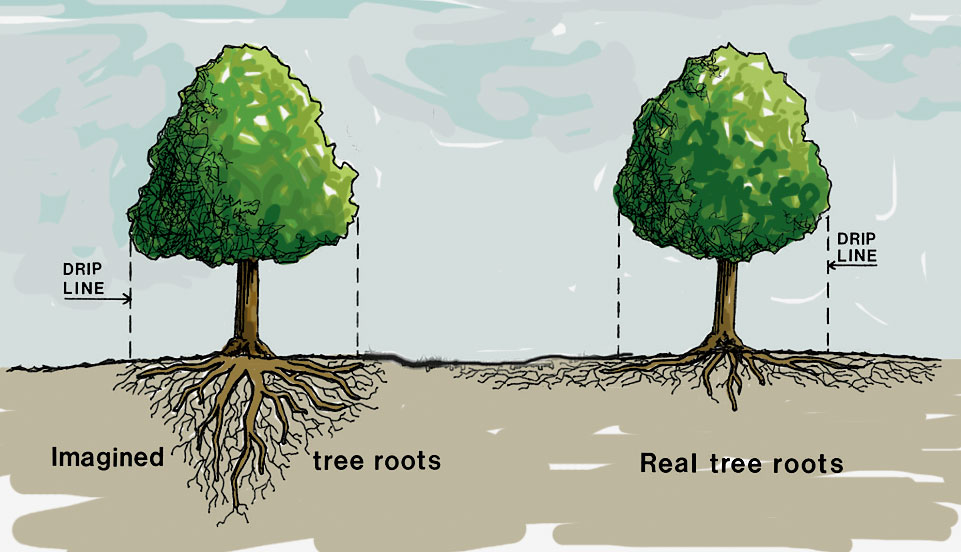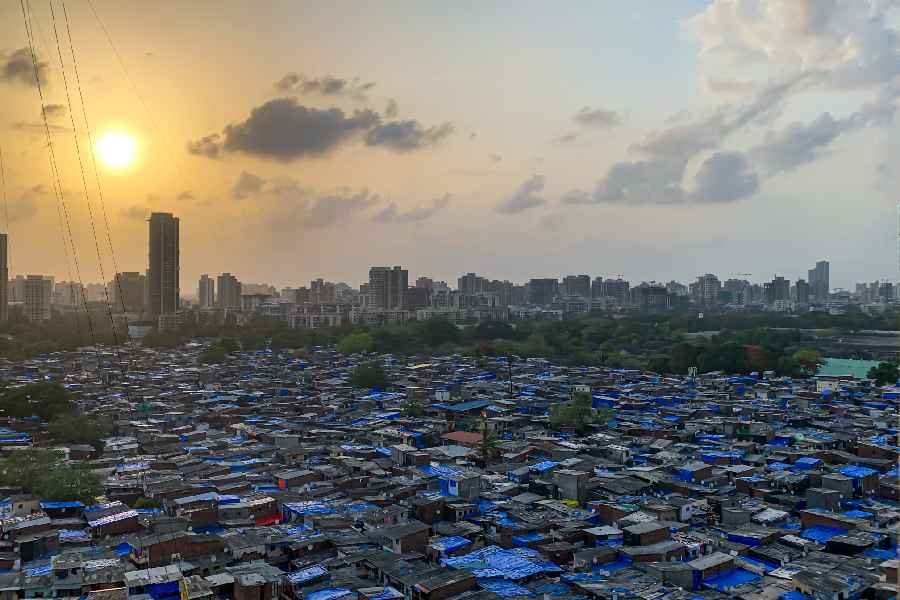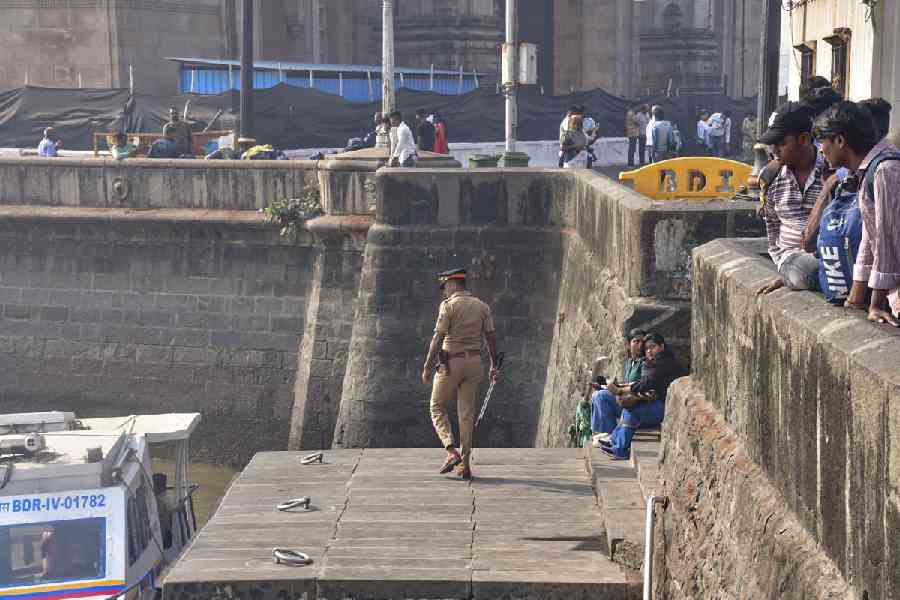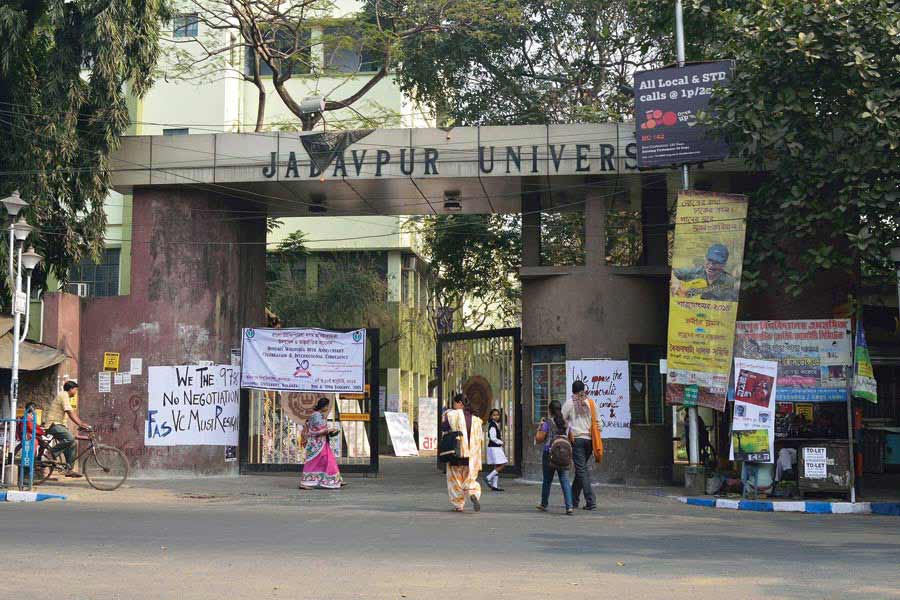Calcutta witnessed a disastrous cyclone on May 20, losing over 25,000 trees in four hours of mayhem. Along with the uprooted trees and broken branches the fragile system of electrical and communication networking which still runs above ground in most part of the city too came crashing down. Though the cables are underground in New Town, the township’s greenery was not spared. Plantations have been done here mostly in the past seven or eight years but the cyclone uprooted over 4,000 of the young trees.
The cyclone was blamed for the devastating loss of greenery.
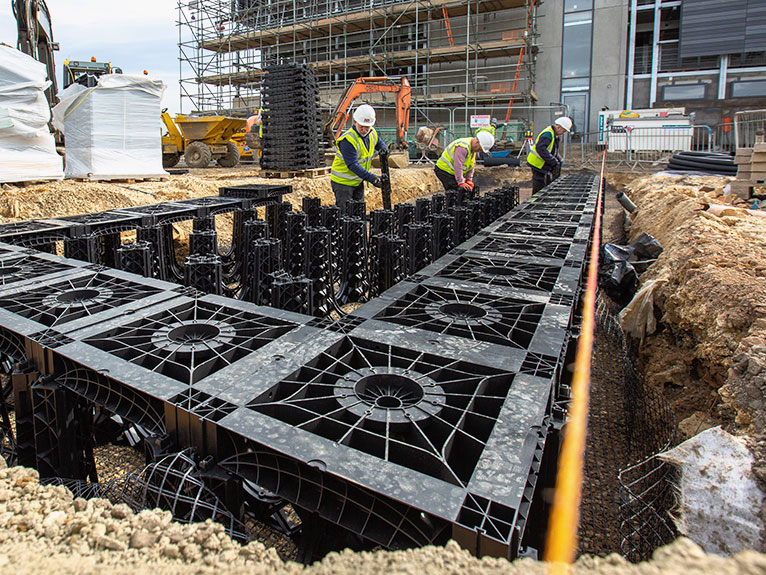
Silva cells being installed under a pavement to facilitate planting of trees while protecting service lines Sourced by the Telegraph
As a landscape architect, I went out two days later to understand the impact. And in my assessment, over 80 per cent of the trees got uprooted because of human greed and disregard for the nature. All over the city we saw large trees uprooted from their base. But what was most surprising was that even trees of 10-12m diameter were showing only a petite 1.5m wide root balls! Rest of the roots couldn’t grow or had died.
Looking at the uprooted trees, it could be understood that most of them did not have the required underground growth due to hard paving surface built tightly around them and infrastructure lines cutting across their roots, thus making them redundant. Many of the trees had tight brick or concrete pedestals built around them. This further limited the growth of the roots.
Let’s understand the structure of the roots. Common belief is that the roots are around the trunk of the tree and spread around the tree drip line (external ends of a tree’s foliage). But actually the roots spread more than 1.5 -2 times the diameter of the tree canopy (see illustration). The roots are also concentrated at a depth of barely 1 to 2 feet under the surface. These roots provide water and nutrients to the tree and also give the necessary anchor strength to the tree mass above.
In Eco Park, many species of trees which did not fall in the city also fell in the rainforest because of the high percentage of sand in the soil which was used to fill it up. The sand helped the growth of the trees but their roots could not anchor themselves well.
Also it was observed that the city has been planted mostly with fast- growing trees like Radhachura, Krishnachura, Kadam, Spathodea etc. Time and again during various thunderstorms, these trees have broken down and done a lot of harm. We have to resist from planting these trees on the roads. They offer nice flowering colours but should be limited to within parks and gardens.
Tensile strength (ability to bend without breaking) of branches is better in slow-growing native trees of Bengal like Aswattha, which therefore can sustain better.
Due to climatic change, there will be 27 to 30 per cent increase in cyclone frequency. So we have to prepare in a way that our greenery does not suffer every time a cyclone comes. My solution is a 4N approach.
1. Nests - Roadside greens have the capacity to provide 30 to 40 per cent greenery to the city and should be developed more scientifically as urban nests. Pedestrian pathways and infrastructure lines can be planned giving enough space for root development. Where there is less space, like on the Major Arterial Road where dedicated plantations on both sides face heavy pressure of infrastructure beneath, new technology like permeable resin pathways or permeable concrete should be used. Silva cells or root cells can be used with pathways above and roots can grow under it. Silva cells are high density polymer units which can be laid under the pathway and which provide a modular suspended pavement system for containing healthy soil beneath paving while supporting traffic loads and accommodating surrounding service lines. It solves the problem of the root ball not getting enough nutrition.
Indigenous trees like Alstonia Scholaris (chhatim), Minlingtonia Hortensis, Terminalis Arjun, Mango, Dalbergia Sissoo etc should be planted. Radhachura and Krishnachura may have Indian names but are introduced varieties.
2. Nomenclature – Venue plantation of strong visual quality and naming a street on the type of tree chosen for it creates a special identity for those streets. Users and visitors relate to them very well.
3. Neurological effects - Urban greenery has a strong effect on the urban happiness index, which is very important in inviting financial investments to a metropolitan city. Thick greening in various layers — shrubs, ground cover, trees and climbers, all should be planned scientifically for maximum benefit. These layers should be used for trapping dust, CO2 and urban noise.
4. Nurture – It is most important to preserve whatever urban greenery we have and nurture the new trees that we plant. For this, a legislative approach has to be taken up. A tree health management team should be constituted with stakeholders from the government, NGOs, professionals and activists. Also new townships should have a tree act which has a master plan, tree census and a guideline of tree planting for every locality.
The writer is a resident of Ujjwala The Condoville and has been in practice for over 15 years

